Abstract
Bacterial endotoxin was injected into rat hind footpads together with bacterial flagellin and 125I-labelled human serum albumin (HSA); the latter was used unmodified or heat denatured (H.HSA) or as an HSA—antibody complex. Endotoxin did not affect the trapping, retention nor localization of the labelled HSA in the popliteal and aortic lymph nodes, whether the antigen had been injected as HSA, H.HSA or as an HSA—antibody complex.
If endotoxin was injected at the same time as: (1) flagellin, there was an increased production of anti-flagellin antibody; and (2) H.HSA or HSA—antibody complex, detectable amounts of anti-HSA antibody were produced. When H.HSA and endotoxin were injected, the primary response was long lived yet the period of induction of antibody formation and of antigen persistence in the lymphoid tissues was short. If, during the primary antibody response to H.HSA, the animals were challenged with HSA, equally strong secondary antibody responses occurred with an HSA—antibody complex or with HSA alone.
The results were interpreted in terms of the tissue localization pattern of H.HSA (medullary macrophage) and HSA—antibody complex (medulla and lymphoid follicles). It was suggested that: (1) induction of antibody formation and priming of cells for a secondary antibody response might occur following localization of the antigen in the medulla and that antigen localization in the lymphoid follicles might not be a strict requirement for this; and (2) the follicular localization of antigen might be the preferential mechanism for the firing of a secondary antibody response.
Full text
PDF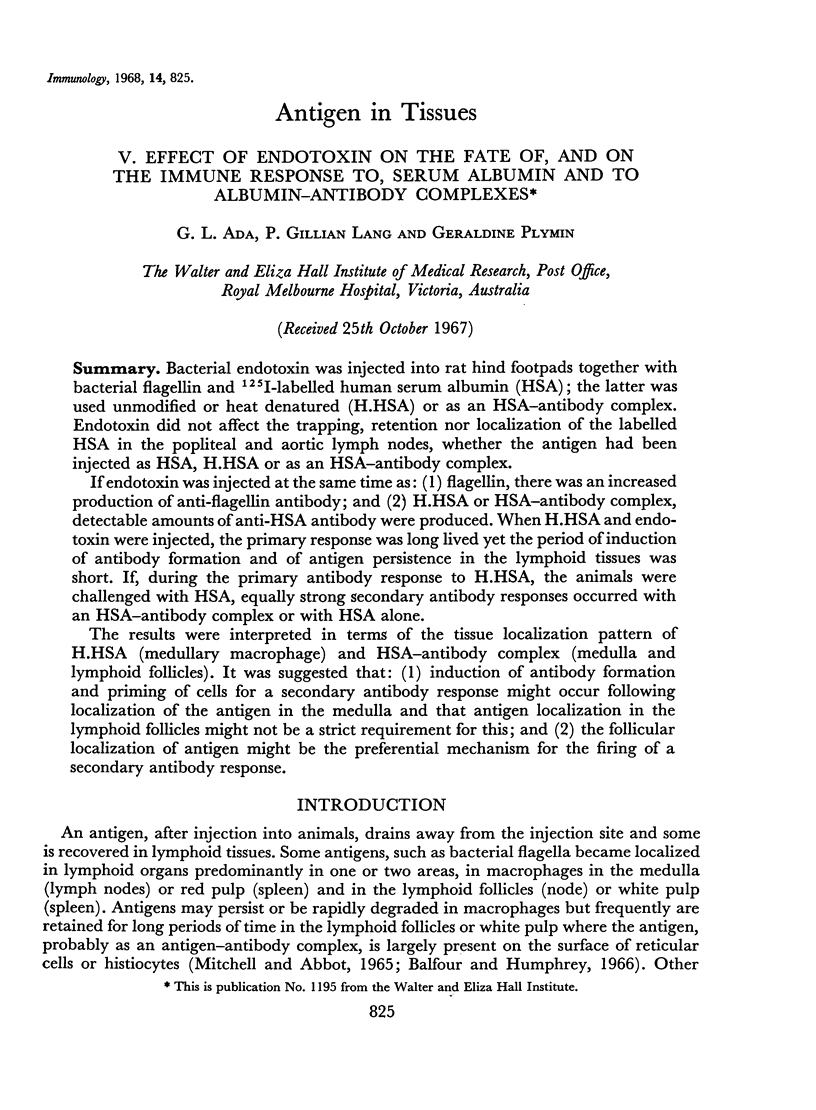
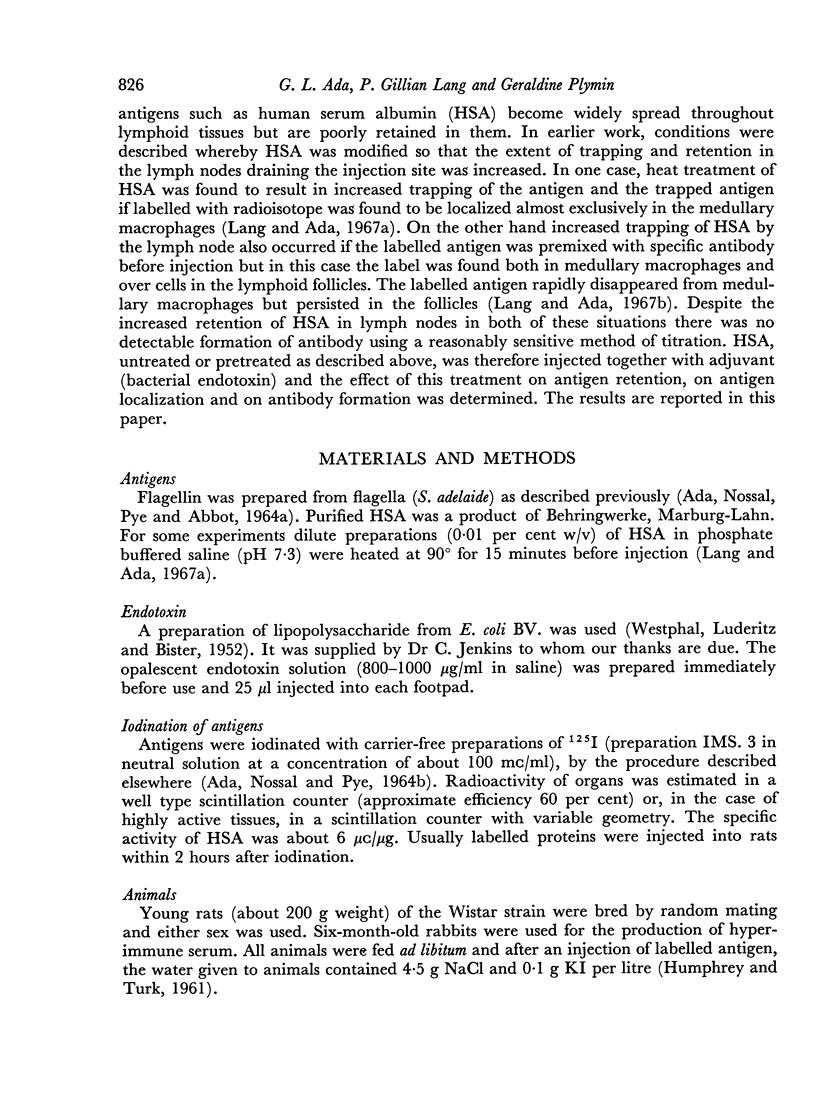
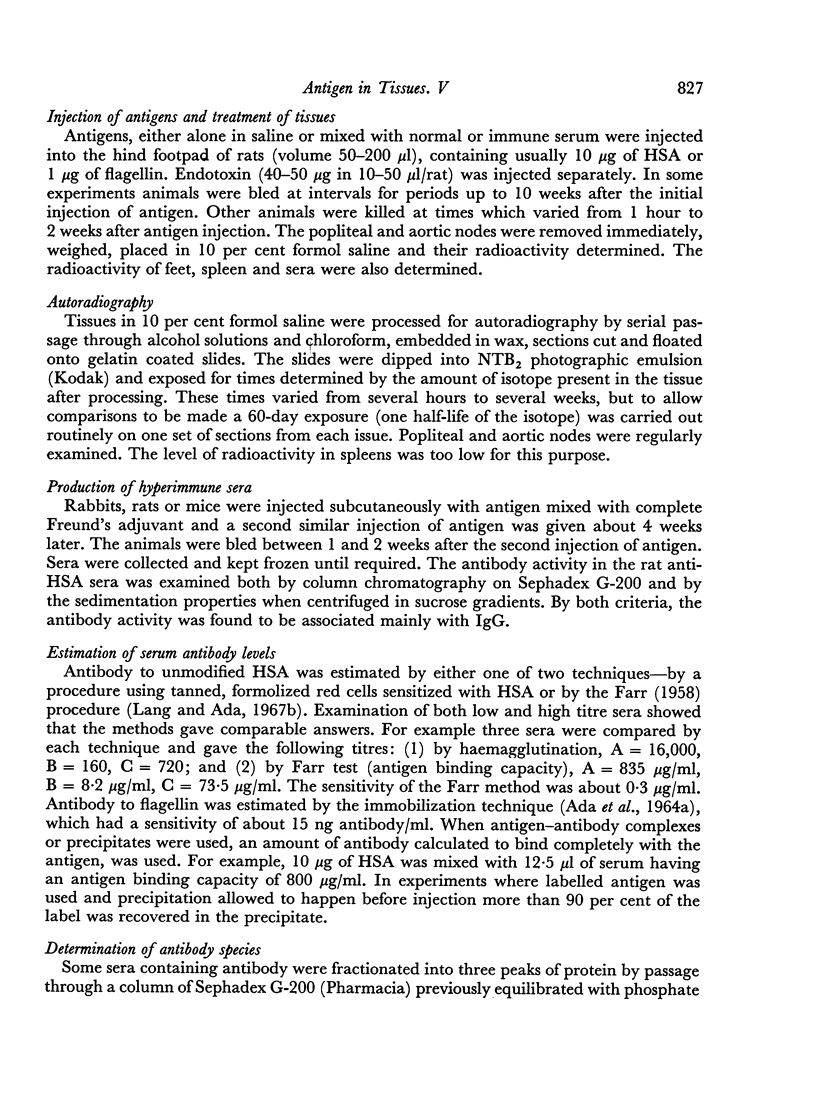
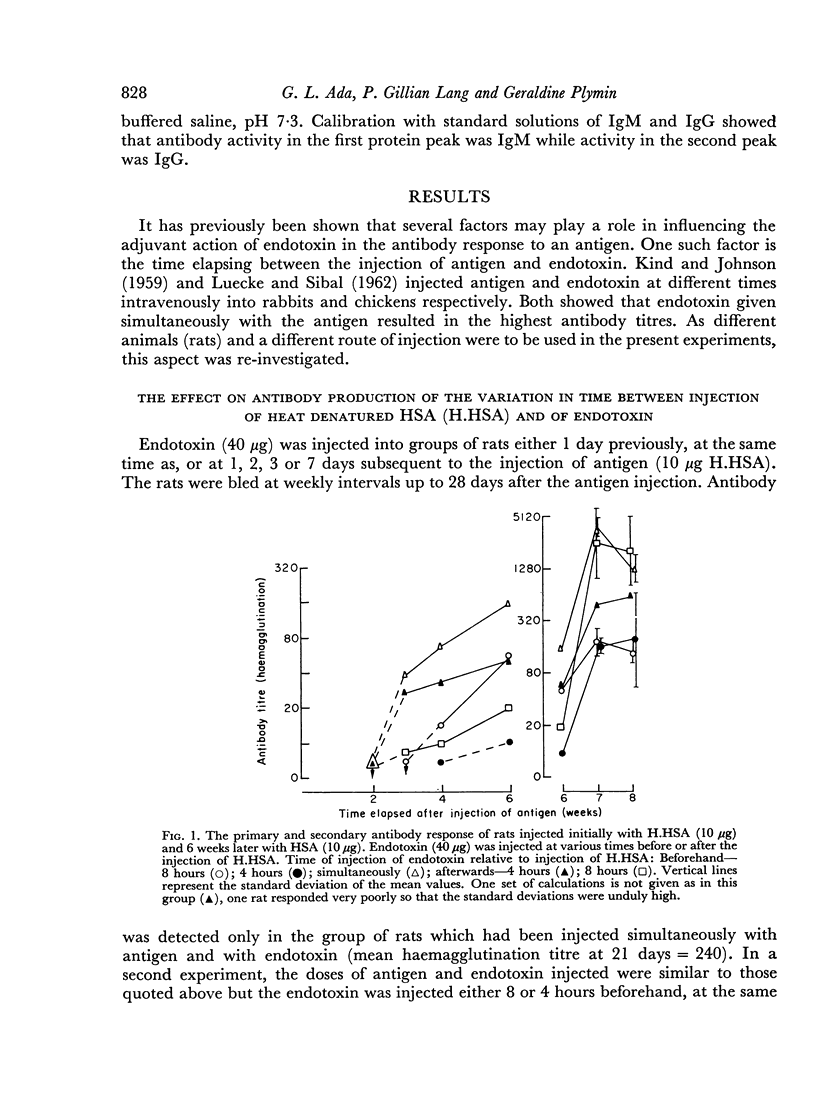
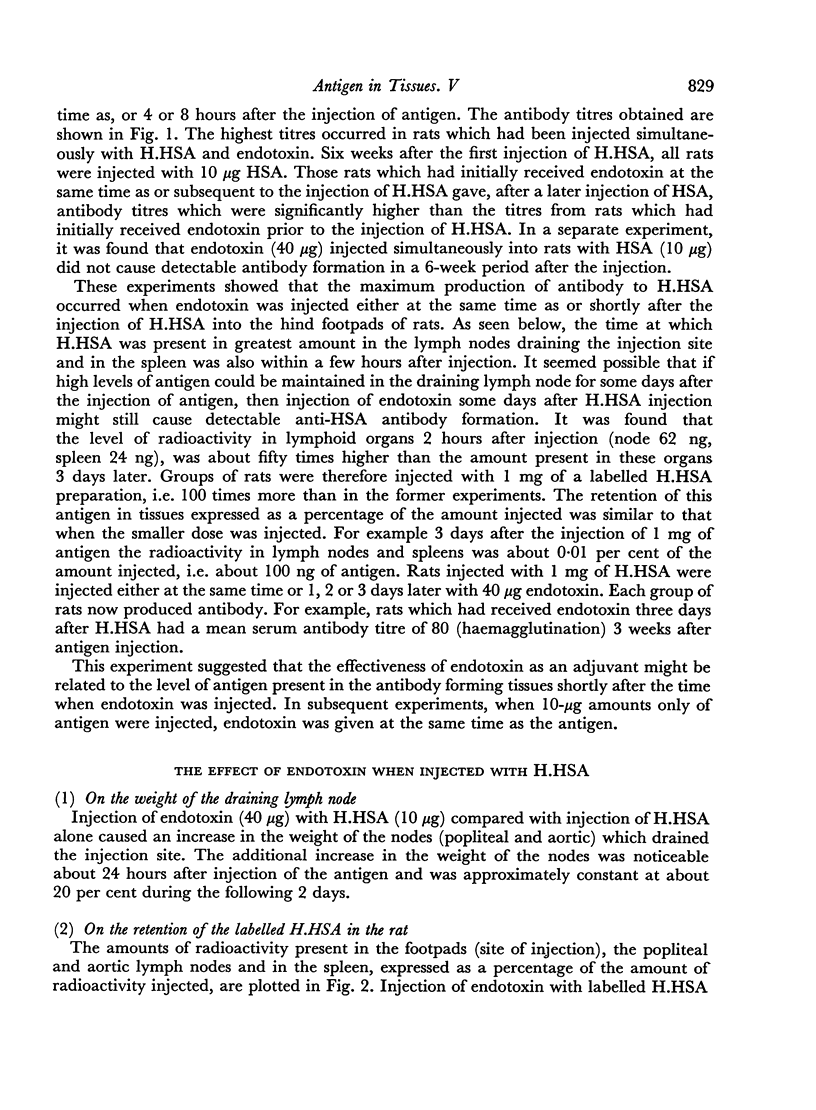
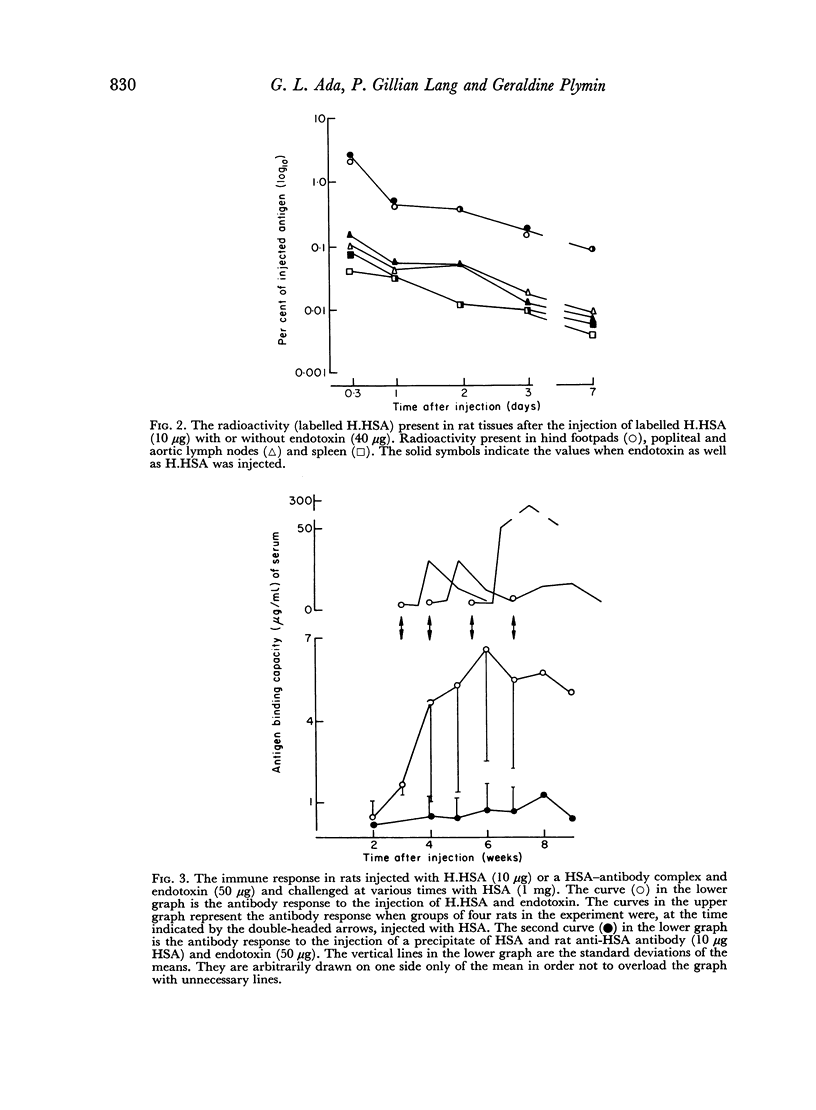

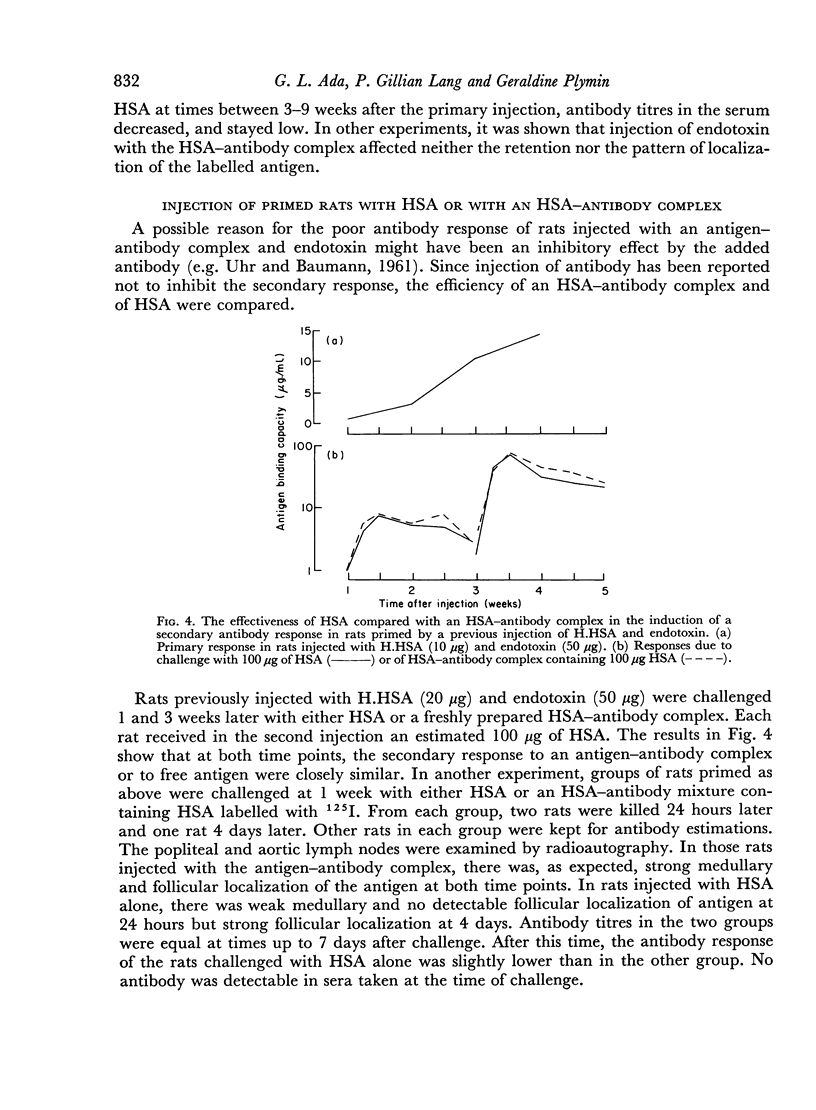

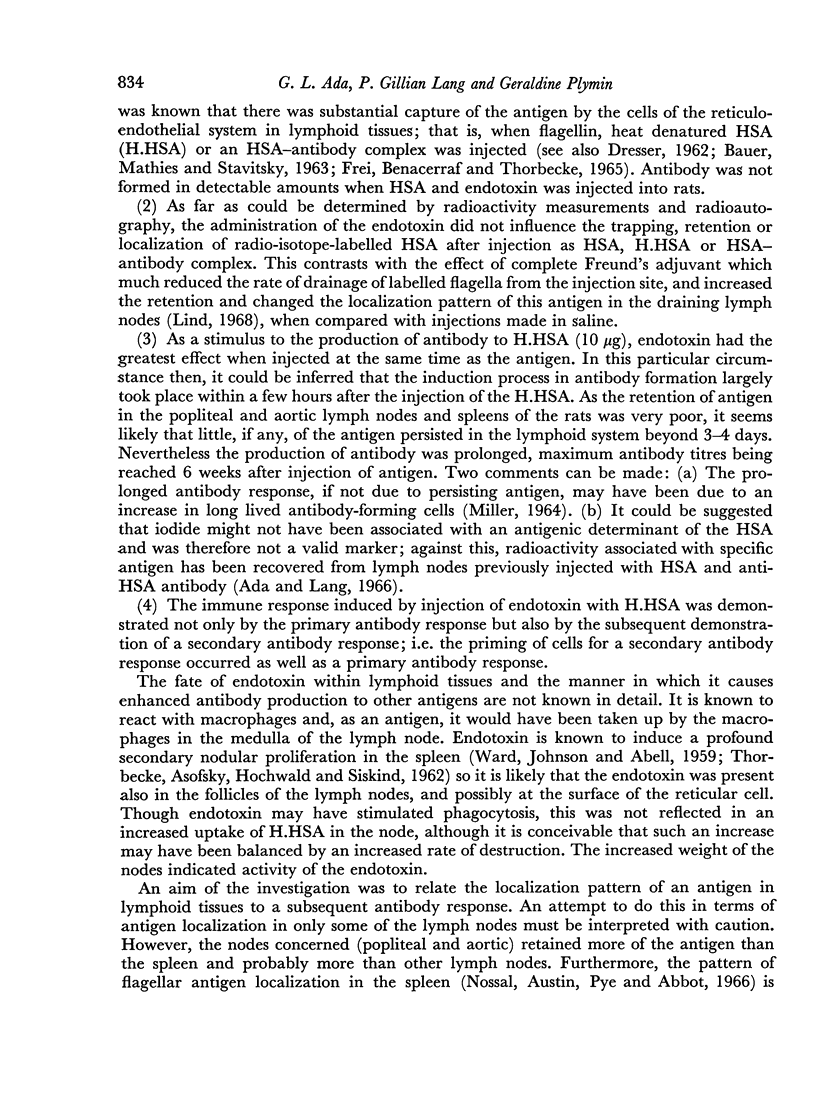
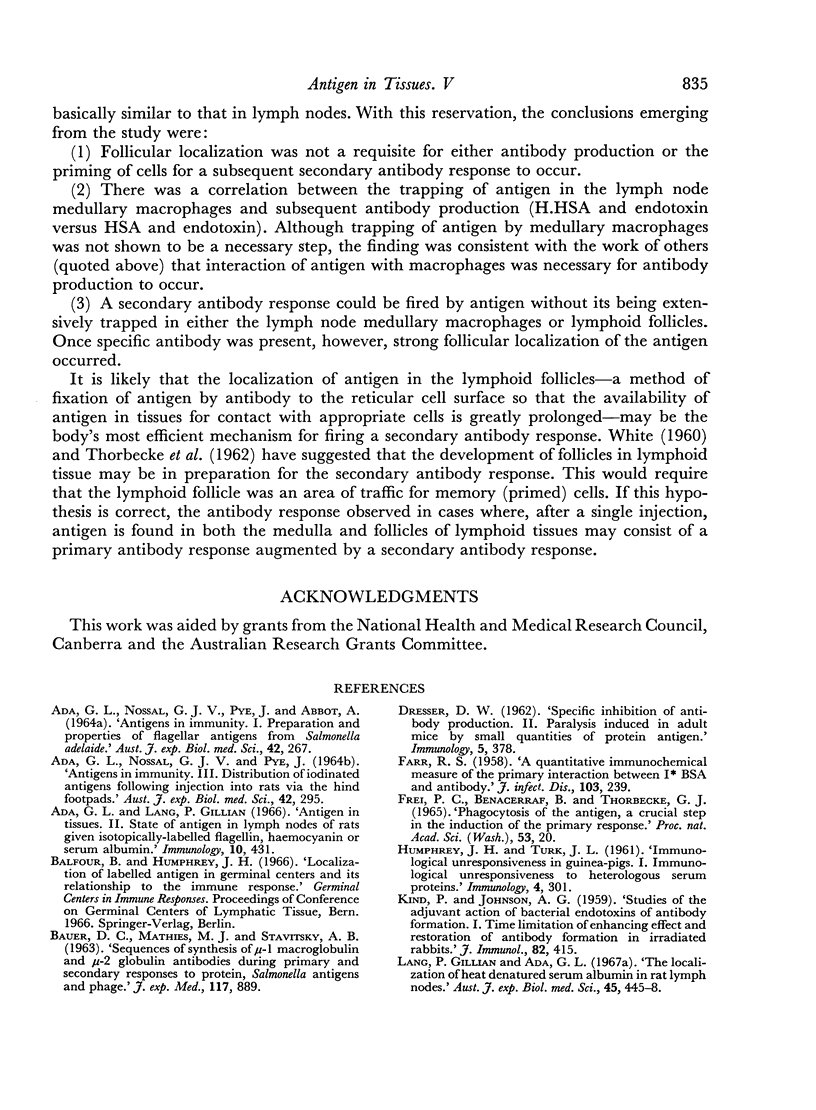
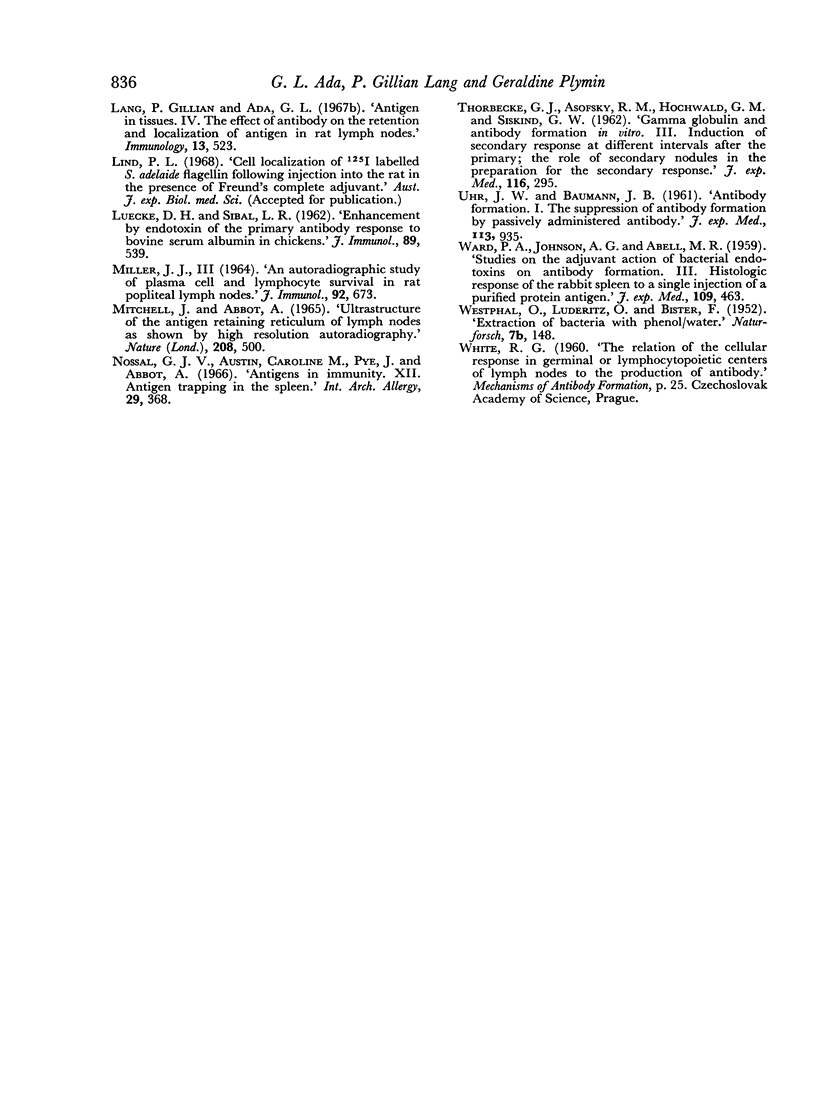
Selected References
These references are in PubMed. This may not be the complete list of references from this article.
- ADA G. L., NOSSAL G. J., PYE J., ABBOT A. ANTIGENS IN IMMUNITY. I. PREPARATION AND PROPERTIES OF FLAGELLAR ANTIGENS FROM SALMONELLA ADELAIDE. Aust J Exp Biol Med Sci. 1964 Jun;42:267–282. [PubMed] [Google Scholar]
- ADA G. L., NOSSAL G. J., PYE J. ANTIGENS IN IMMUNITY. III. DISTRIBUTION OF IODINATED ANTIGENS FOLLOWING INJECTION INTO RATS VIA THE HIND FOOTPADS. Aust J Exp Biol Med Sci. 1964 Jun;42:295–310. [PubMed] [Google Scholar]
- BAUER D. C., MATHIES M. J., STAVITSKY A. B. Sequences of synthesis of gamma-1 macroglobulin and gamma-2 globulin antibodies during primary and secondary responses to proteins, salmonella antigens, and phage. J Exp Med. 1963 Jun 1;117:889–907. doi: 10.1084/jem.117.6.889. [DOI] [PMC free article] [PubMed] [Google Scholar]
- DRESSER D. W. Specific inhibition of antibody production. II. Paralysis induced in adult mice by small quantities of protein antigen. Immunology. 1962 May;5:378–388. [PMC free article] [PubMed] [Google Scholar]
- FARR R. S. A quantitative immunochemical measure of the primary interaction between I BSA and antibody. J Infect Dis. 1958 Nov-Dec;103(3):239–262. doi: 10.1093/infdis/103.3.239. [DOI] [PubMed] [Google Scholar]
- FREI P. C., BENACERRAF B., THORBECKE G. J. PHAGOCYTOSIS OF THE ANTIGEN, A CRUCIAL STEP IN THE INDUCTION OF THE PRIMARY RESPONSE. Proc Natl Acad Sci U S A. 1965 Jan;53:20–23. doi: 10.1073/pnas.53.1.20. [DOI] [PMC free article] [PubMed] [Google Scholar]
- HUMPHREY J. H., TURK J. L. Immunological unresponsiveness in guinea pigs. I. Immunological unresponsiveness to heterologous serum proteins. Immunology. 1961 Oct;4:301–309. [PMC free article] [PubMed] [Google Scholar]
- KIND P., JOHNSON A. G. Studies on the adjuvant action of bacterial endotoxins on antibody formation. I. Time limitation of enhancing effect and restoration of antibody formation in x-irradiated rabbits. J Immunol. 1959 May;82(5):415–427. [PubMed] [Google Scholar]
- LUECKE D. H., SIBAL L. R. Enhancement by endotoxin of the primary antibody response to bovine serum albumin in chickens. J Immunol. 1962 Oct;89:539–544. [PubMed] [Google Scholar]
- Lang P. G., Ada G. L. Antigen in tissues. IV. The effect of antibody on the retention and localization of antigen in rat lymph nodes. Immunology. 1967 Nov;13(5):523–534. [PMC free article] [PubMed] [Google Scholar]
- Lang P. G., Ada G. L. The localization of heat denatured serum albumin in rat lymph nodes. Aust J Exp Biol Med Sci. 1967 Aug;45(4):445–448. doi: 10.1038/icb.1967.43. [DOI] [PubMed] [Google Scholar]
- MILLER J. J., 3rd AN AUTORADIOGRAPHIC STUDY OF PLASMA CELL AND LYMPHOCYTE SURVIVAL IN RAT POPLITEAL LYMPH NODES. J Immunol. 1964 May;92:673–681. [PubMed] [Google Scholar]
- Mitchell J., Abbot A. Ultrastructure of the antigen-retaining reticulum of lymph node follicles as shown by high-resolution autoradiography. Nature. 1965 Oct 30;208(5009):500–502. doi: 10.1038/208500b0. [DOI] [PubMed] [Google Scholar]
- Nossal G. J., Austin C. M., Pye J., Mitchell J. Antigens in immunity. XII. Antigen trapping in the spleen. Int Arch Allergy Appl Immunol. 1966;29(4):368–383. [PubMed] [Google Scholar]
- THORBECKE G. J., ASOFSKY R. M., HOCHWALD G. M., SISKIND G. W. Gamma globulin and antibody formation in vitro. III. Induction of secondary response at different intervals after the primary; the role of secondary nodules in the preparation for the secondary response. J Exp Med. 1962 Sep 1;116:295–310. doi: 10.1084/jem.116.3.295. [DOI] [PMC free article] [PubMed] [Google Scholar]
- WARD P. A., JOHNSON A. G., ABELL M. R. Studies on the adjuvant action of bacterial endotoxins on antibody formation. III. Histologic response of the rabbit spleen to a single injection of a purified protein antigen. J Exp Med. 1959 May 1;109(5):463–474. doi: 10.1084/jem.109.5.463. [DOI] [PMC free article] [PubMed] [Google Scholar]


